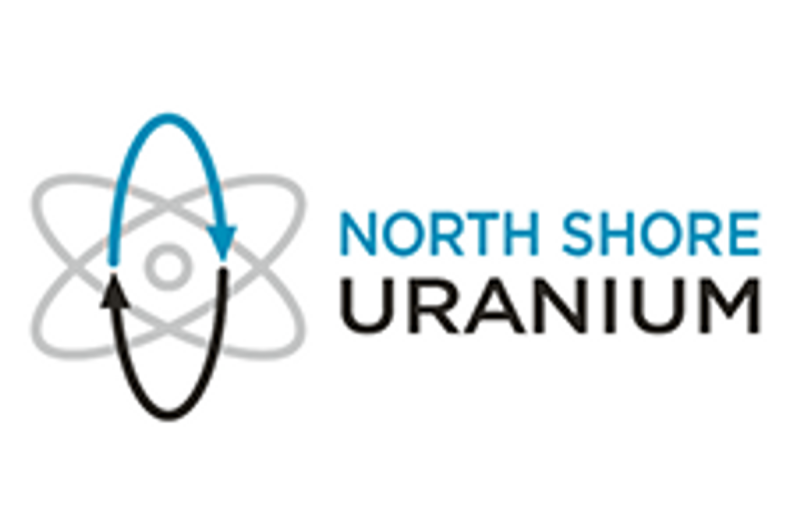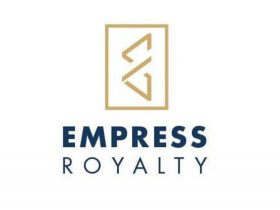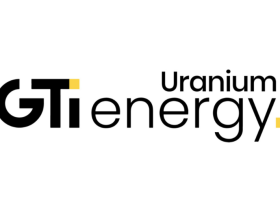Overview
North Shore Uranium (TSXV:NSU) is a Canadian exploration company focused on discovering economic uranium deposits at the eastern margin of Saskatchewan’s world class Athabasca Basin in Canada.
North Shore has two highly prospective exploration properties totaling 60,210 hectares – Falcon and West Bear – which are located in close proximity to two globally significant active uranium mines, Cigar Lake and McArthur River, that produce 100 percent of Canada’s uranium.
The ongoing geopolitical events coupled with the global net-zero goal have created transformative tailwinds for the nuclear power industry, from both a demand and supply perspective. Nuclear power is critical for meeting CO2 emission reduction goals set by the Paris Agreement. There is increasing recognition that nuclear power, with its clean emissions profile, and reliable and secure base load characteristics has a key role to play in achieving decarbonization goals. This is evident in the recently released World Energy Outlook 2023 published by the International Energy Agency (IEA) which highlighted the role that nuclear energy can play in making the journey towards net-zero faster, more secure and more affordable.
According to the World Nuclear Association, there are currently 440 reactors operating globally. This capacity is increasing steadily with about 60 reactors under construction (in 17 countries) and a further 112 reactors planned and 318 reactors proposed. Governments across the world, including North America, Asia and Europe, are backing an expansion of nuclear energy. This should drive demand for uranium over the coming decades.
According to the World Nuclear Fuel Report issued by the World Nuclear Association, the demand for fuel for nuclear reactors is projected at 65,650 tons in 2023, further increasing by 28 percent to 83,840 tons in 2030, and then nearly doubling to 130,000 tons by 2040. On the supply side, the situation remains challenging particularly due to the Russia-Ukraine conflict. Global supplies remain constrained mainly due to years of under-investment in new production, monopoly of state-owned entities, transportation risks and geopolitical uncertainties. For 2023, UxC, a leading market research firm, projects a 52-million-pound (Mlbs) deficit with global demand at 195 Mlbs and supply at 143 Mlbs. The deficit is expected to further jump to 113 Mlbs by 2025.
As a result, spot uranium prices have seen a big jump. Now at over US$80/lb, it is the highest it’s been since 2008. The prices are likely to remain firm given that the uranium supply/demand balance remains tight. As noted above, it is likely to get tighter in the next 24 months as demand continues to rise, while new supply remains limited, and inventories/stockpiles keep getting drawn down. Further exacerbating the supply is the fact that more than 50 percent of global uranium production comes from countries with significant geopolitical risk.
This is where companies such as North Shore Uranium, with a presence in geopolitically stable jurisdictions such as the Athabasca Basin, stand out. North Shore offers investors an opportunity to participate in the uranium upswing and profit from higher prices.
Key Projects
North Shore holds interests in two highly prospective uranium properties at the eastern margin of Saskatchewan’s Athabasca Basin, Falcon and West Bear.
Falcon Property
This project comprises 15 claims totaling 55,699 hectares located along the Wollaston trend in an emerging uranium district that has been seeing a surge in exploration activity. It is located just west of Skyharbour Resource’s and Tisdale Clean Energy’s Fraser Lakes B Zone uranium resource and along the trend of two new discoveries made by Baselode Energy and 92 Energy, ACKIO and GMZ respectively. An added advantage is the presence of the Key Lake uranium mill 30 kilometers east of the Falcon property and all-weather roads 40 kilometers to the east and 50 kilometers west. In addition, the power line that feeds the Key Lake Mill runs right through the property.
Of the total 15 claims, North Shore has 100 percent ownership of four claims totaling 12,791 hectares. It has the option to earn an 80 percent interest in the remaining 11 claims totaling 42,908 hectares over three years from Skyharbour Resources for $5.3 million in total consideration, with $3.55 million of that being in exploration expenditures. Further, the company has an option to acquire the remaining 20 percent interest for $5 million cash and $5 million in stock.
The Falcon property is an early-stage, highly prospective exploration project with a limited exploration history in an area that is seeing increased exploration activity and recent discoveries. Some exploration occurred in the late 1970s and early 1980s, which included airborne surveys, prospecting programs and limited drilling. Additional modern airborne electromagnetic (“EM”) and magnetic surveys were conducted in the 2000’s. In 2022, on the back of exciting new discoveries nearby, high-resolution airborne gravity-magnetic radiometric surveys covering over 80 percent of the property were conducted by North Shore and Skyharbour.
In 2008, JNR Resources drilled 28 holes associated with EM conductors in three zones on three claims in the center of the property. Drilling associated with the EWA showing, a shear zone at surface where samples yielded up to 0.492 percent U3O8 and 1,300 ppm lead were collected, returned samples with elevated uranium values up to 0.235 percent U3O8. Subsequent to this drilling, additional EM conductors that have not been tested have been identified through further exploration work.
Multiple NE-SW-trending EM conductor systems that have yet to be tested have been identified on the Falcon property with interpretation complemented by new geophysical data that JNR Resources did not have access to. North Shore is working with all the available geophysical and geological data to prioritize areas of the EM conductor zones for drilling in Q1 2024 and beyond. Brooke Clements, North Shore’s President and CEO stated “There has been limited exploration work at Falcon since a 2008 drill program that focused on a small portion of the property. There are a number of high-quality well-defined EM conductors that have yet to be tested. Using new data and interpretation, and examples from new discoveries on the eastern margin of the Basin, North Shore aims to test multiple targets in the coming years in this highly prospective area, starting in Q1 2024. A significant new uranium discovery could be one drill hole away.”
West Bear Property
The West Bear property is located at the eastern margin of the Athabasca Basin. It comprises five mineral claims covering 4,511 hectares. It is located approximately 35 kilometers southeast of the Cameco Cigar Lake uranium mine, the world’s second-largest and highest grade uranium mine. The main West Bear claim block is just south of a uranium reserve with 1.4 M lbs. U3O8 and a coincident Co-Ni resource both held by Uranium Energy Corporation. Additionally, the presence of nearby infrastructure, including the McClean Lake uranium mill and an all-weather road ten kilometers east, is a positive for the West Bear project. The mineralization on the adjacent property illustrates the potential for mineralization on the West Bear property.
North Shore has an option to acquire 75 percent of the West Bear property from Gem Oil Inc. under the following terms over three years ending on April 11, 2025: $225,000 cash (of which $125,000 has been paid); $75,000 cash or common shares ($25,000 paid); and $271,000 in exploration expenditure ($225,000 already spent). Further, it has the option to acquire the remaining 25 percent interest for $200,000 cash and $200,000 in stock.
The property has seen limited historic drilling with 16 holes drilled between 1968 and 2015; of which four holes in 2015 were drilled by Denison. A fixed-wing airborne gravity-magnetic and radiometric geophysical survey covering 80 percent of the property was completed by North Shore in 2022. The interpretation of the results from that survey together with publicly available geophysical and geologic data was used to prioritize three target zones with uranium potential for exploration in 2024. The initial follow-up exploration would consist of ground geophysical surveys and/or geologic mapping and prospecting in an effort to upgrade targets for drilling.
Management Team
Brooke Clements – President and CEO
Brooke Clements is a geologist with over 35 years of experience. Mr. Clements has held positions as President of Peregrine Diamonds (2007-2015), vice-president of exploration of Ashton Mining of Canada (1999-2007), and senior vice-president of Peregrine Metals (2007-2011). Peregrine Metals was sold to Stillwater Mining for US$487 million in 2011. He received the prestigious Association for Mineral Exploration of BC Hugo Dummett Award for diamond exploration and development in 2012 and 2018 in recognition of diamond discoveries in Quebec and Nunavut, respectively as well as the PDAC Bill Dennis Award in 2019 for the Nunavut discovery.
Jimmy Thom – Director
Jimmy Thom is currently the geologist and exploration manager for ASX-listed Dynamic Metals and Jindalee Resources (2021-present). Before that, he worked in various capacities at Paladin Energy (from 2009-2021), most recently (2018-2021) as exploration manager, and was responsible for all aspects of uranium exploration and deposit evaluation in multiple jurisdictions including Labrador.
Doris Meyer – Director
Doris Meyer has over 40 years of experience in financial reporting and corporate compliance. She has been director, CFO and corporate secretary for numerous publicly listed exploration companies trading on the TSX and TSXV.
Dan O’Brien – CFO
Dan O’Brien is the CFO for several publicly listed exploration companies. He was previously a senior manager at a leading Canadian accounting firm.





